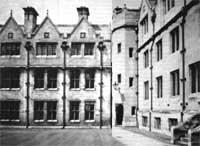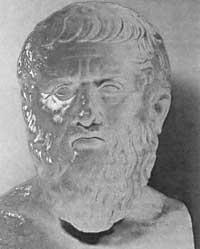Leonardo da Vinci and his companions
1989/06/01 Bandres Unanue, Luis Iturria: Elhuyar aldizkaria
Leonardo, one of the greatest men who has lived in this world, was the cursed of a strong lawyer (Piero da Vinci) and a peasant named Katalina. He was born in 1452 in Vinci, between Pisa and Fiorenza. His first educational steps were guided by his father. Then, after passing through several places, he acted in different courts: Fiorenza, Milano and Rome. Finally, he died in France in 1519 in the court of Francis I as his servant and friend.
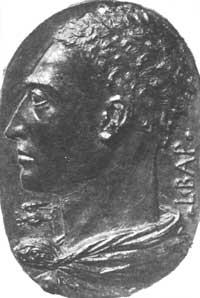
From the beginning he showed his incredible gifts surprising his friends and his relatives. His beauty and ease of contact, his formation and wisdom, his ingenuity and personality allowed him to know, deepen and work all the branches of knowledge and all the ways of art of the time. Leonardo was a painter, sculptor, engineer, architect, physicist, biologist and philosopher, and in each of its branches was the iaio. Surely the history of mankind has not known any other man like him.
But, although his close achievements are great, they are small compared to the paths he opened to knowledge: in each branch the concept of real methods of research, the understanding of basic principles and the importance of science, among others. If we say that Petrarch is a pioneer of the Literary Renaissance, we can say that he is Leonardo in other areas. He was neither scholastic nor simply recognized the authority of the classics. As a true scientific path only the observation and experimentation of nature accepted it. In his opinion, the knowledge of the ancient scholars, of course, had its use as a basis, but not as an objective.
Leonardo researched science from his technical side. Therefore, we can say that his attitude has some current connotation. To solve the problems of his thousand activities he had to perform more tests and experiments: as a painter he studied the laws of optics, the structure of the eye, some details of the human anatomy and the wings of the birds. As an engineer he took charge of the mechanical bases (static and dynamic) to be able to answer the questions of this field, etc. In all these problems, the views of both Aristotle and the Fathers and Mothers of the Church gave little help and believed that it was much more important to accept reality as it is (and not as “how it should be”).
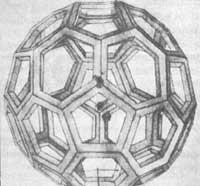
However, besides all this, Leonardo was also a philosopher. It must be said that from this point of view we are free from all the advances of theology and this implies a profound change in the attitude of his predecessors.
But, without removing any merit from Leonardo, we should not think that it was starting from scratch. From the writings and other vestiges of Leonardo, it is evident that at that time (and a little earlier also) in Italy there were men more concerned with research than with the opinions of Aristotle: Alberti (1404-1472) on mathematics and physical experiments, Toscanelli (+1482) on astrology, Vespucci on geometry, Pacioli on mathematics, Della Torre. All of them and many more, somehow, maintained relations with Leonardo.
Undoubtedly, the rational synthesis made by the scholastic made reason the accepted idea that he was able to understand the universe. However, it appeared that the solutions, observations and experiments offered by both the scholastic and Aristotle were inadequate as soon as they were used. Therefore, to build a true wisdom it was necessary to start from another basis, that is, from obtaining general principles through induction, leaving aside Aristotle and St. Thomas and based on the results obtained through the research of Nature. These steps were then being taken by Italian mathematicians, astronomers and anatomists.
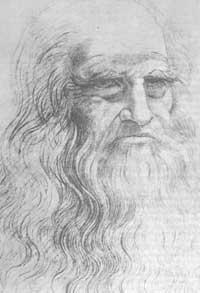
But these men were related to Greek thought, especially to Archimedes. Archimedes' books were not yet published and good writings were scarce. Leonardo got from there and from here his works and recognized aloud his admiration. The Archimedes researcher and geometry is the Greek master of current physical science and not at all the encyclopedic philosopher Aristotle.
Leonardo understood and used the experimental path intuitively, before Francis Bacon filmed this method and Galileo used it. Leonardo wrote no book, but in his notes he left us his ideas. According to him, both in mathematics and geometry and arithmetic, he can reach all the security in this field, since he uses only ideal mental concepts. On the contrary, real science is based on observation, and if it had mathematical reasoning, we could achieve a higher level of security. But all those sciences that are not based on experimentation that is the mother of security and do not end up in a clear experiment are empty and full of errors. Science provides security and energy. The light-less technique of science is similar to that of a boat without slogans or compasses.
But even though Leonardo's method and intuition are absolutely surprising, when we switch to his achievements, our surprise increases. Later Galileo predicted the principle of inertia that he would throw: nothing we can perceive with our senses has no movement of its own;... if the whole body has a weight in the direction of its movement. I knew that in free fall the speed of the body is greater depending on time, although this relationship is not calculated. Aware of the inability of continuous movement, he achieved the law of the lever. According to Leonardo, the lever was a basic machine and all other machines are only their combinations or modifications.
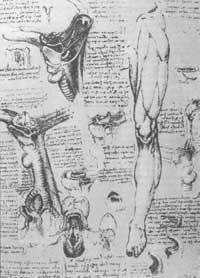
Da Vinci resurrected Archimedes' theories of fluid pressure and demonstrated that in the communicated vessels liquids reach the same level. But it is also true that containers filled with different liquids have level heights inversely proportional to densities. He also worked in the field of hydrodynamics: with water coming out through holes, currents in a channel, waves that expand on a surface, etc. He moved from the waves of water to the air and to the laws of sound. And even more, finding that light looked much like it, he discovered that some of the conclusions of wave theory were useful.
In the field of astronomy he invented a kneading machine based on laws. That was a breakthrough in Aristotle's ideas. According to the latter, the bodies of the garden were perfect and have nothing to do with those around us. For Leonardo, instead, the Earth is only one more star and reflects light as the Moon. Although Da Vinci astronomy has many errors, we can say that it is the correct basis.
Since things are older than writings, he claimed that the Earth carries within it traces of its past before any other writing. It makes no sense to think that the fossils found today at the mountain peaks arose in the sea and that in the forty days of the Noe flood they reached the present places. On the other hand, not all the waters of the Earth would catch all the mountains.
Therefore, Leonardo says that there have had to be changes in the surface of the Earth: the mountains have risen to occupy new positions. But for this we do not have to accept any cataclysm. Over time, the Po River will transport the dry land to the bottom of the Adriatic Sea, as has led much of Lombardy. It seems that we read this and are facing the ideas of any of those present.
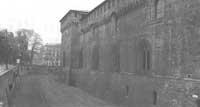
As a painter and sculptor, Leonardo, to know the anatomy of the human body, contrary to what the Church said, dissected many bodies and then made detailed drawings. These are, in addition to the lessons of the body, authentic works of art. The other area that Leonardo touched was that of physiology, which was also very advanced in his time. He insisted on how the blood was passed through the body and what was happening: taking the food to all parts and removing the waste (as it is done in an oven, putting the load and removing the ashes).
He studied the heart muscles and made some drawings of his valves. According to them, he apparently knew the operation of the valves. In his opinion, blood circulation can be compared to the water cycle: from the mountains to the rivers and to the sea, from there to the clouds, from here to return to the mountains through the rain. It seems that Leonardo understood the function of blood one hundred years before Harvey. As we have said before, he studied the structure and functioning of the eye, and rejected the theory that was accepted at that time (according to which the eye threw a few rays on the object he wanted to see), built a model with the optical parts of the eye and expressed how the image is made in the retina.
To all this we must add that he discarded all the follies of necromancy, astrology and alchemy. In his opinion, Nature is not magical, but subordinate to the essential.
After seeing what I have said here summarizing, I believe that Leonardo da Vinci is one of the greatest men who has given the world as you said before. Unfortunately, he never put in place the insistent plan of writing books and dreaming what that could mean in the development of the science of his time and present, is useless.

Gai honi buruzko eduki gehiago
Elhuyarrek garatutako teknologia




